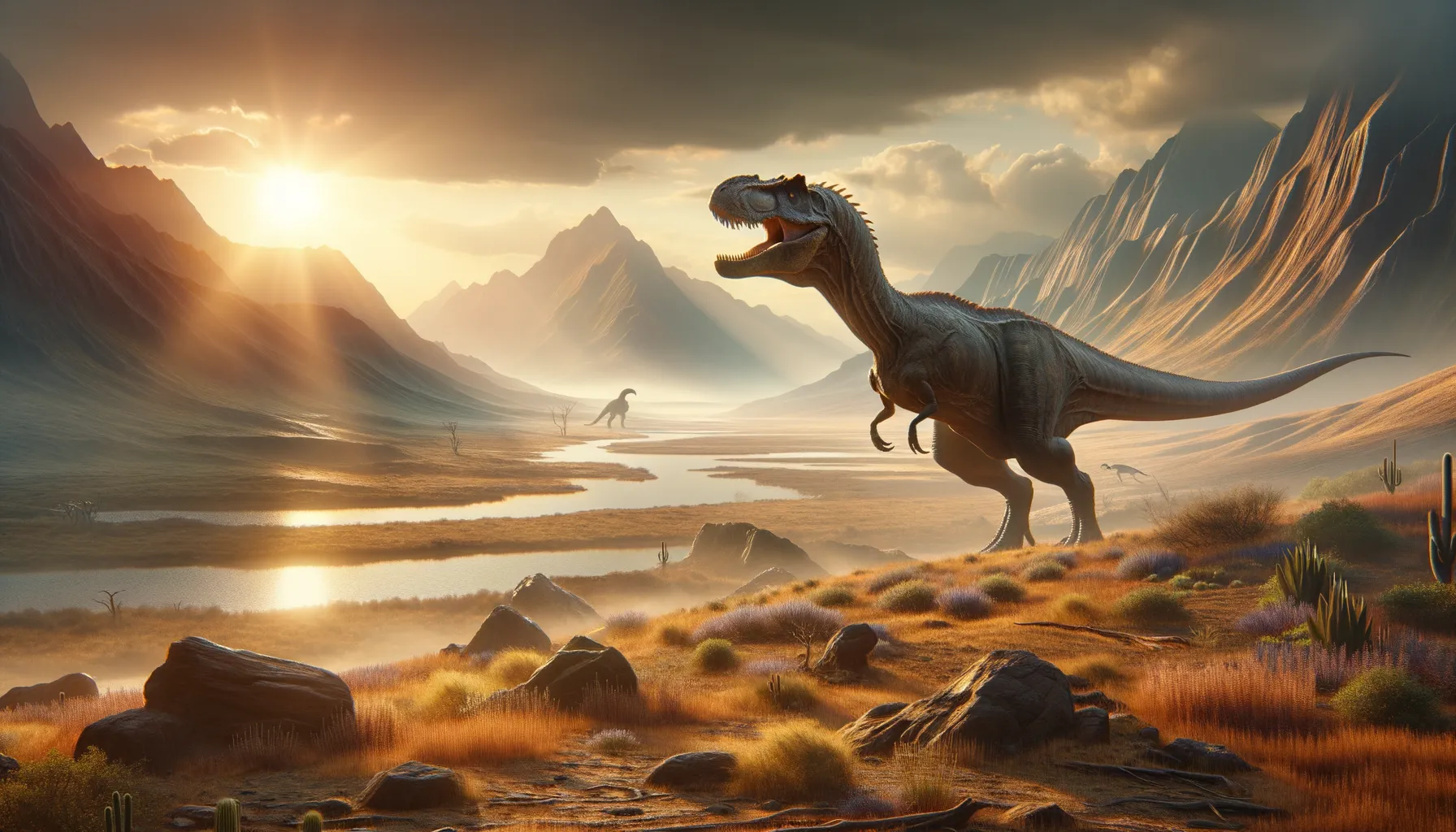
Comanchesaurus
A swift predator of the Cretaceous age.
Period
Cretaceous
Length
Estimated length of about 6 meters.
Height
Around 1.5 meters at the hip.
Weight
Approximately 200 to 300 kilograms.
Comanchesaurus is a relatively recent discovery in paleontology, hailing from the early part of the Cretaceous period. This predator roamed the landscapes that now constitute present-day Texas. Known for its moderate speed and agility, it was a formidable hunter of its time. With growing interest in this species, new insights into its lifestyle and environment are continually being unearthed, providing a clearer picture of its ecological niche.
Diet
Comanchesaurus was a carnivore, preying on small to medium-sized animals. Its diet likely included smaller dinosaurs, reptiles, and possibly mammals that existed in its habitat. This diet helped maintain ecological balance in its environment.
Hunting
With its moderate speed, Comanchesaurus relied on stealth and surprise to catch its prey. Its hunting methods were likely adapted to varied terrains that offered suitable cover. These strategies ensured survival in a competitive ecosystem.
Environmental challenges
During the Cretaceous period, Comanchesaurus faced fluctuating climates that often necessitated migration. Being in Texas, it had to adapt to both dry spells and more humid periods. Competition from other predators posed continual challenges, necessitating constant adaptation in hunting strategies.
Speed
Moderate, similar to medium-sized predators.
Lifespan
Estimated to live around 20-30 years.
First discovery
Discovered in Texas in the mid-1990s.
Fun Facts
- Comanchesaurus is a small theropod dinosaur that roamed what is now North America during the Early Cretaceous period.
- The name Comanchesaurus means 'Comanche lizard,' named after the Comanche County in Kansas where its fossils were first discovered.
- Comanchesaurus is thought to have been a fast and agile predator, thanks to its lightweight body and long legs.
- This dinosaur would have likely been a carnivore, feasting on small animals and insects.
- Comanchesaurus is estimated to have been about the size of a modern-day turkey, making it one of the smaller dinosaurs of its time.
- Although only fragmentary fossils have been found, paleontologists believe Comanchesaurus belonged to a group of dinosaurs known for their sharp teeth and claws.
- Comanchesaurus lived around 100 to 145 million years ago, sharing its environment with other fascinating creatures like early mammals and different dinosaur species.
Growth and Development
The growth of Comanchesaurus was relatively rapid, allowing it to reach maturity within a few years. Juveniles would have stayed in protected areas of their habitat, avoiding predators until large enough to defend themselves. Development was heavily reliant on diet, impacting the size and health of adults.
Habitat
Comanchesaurus thrived in the semi-arid and wooded areas of what is now Texas. These regions offered a mix of open spaces and forested areas perfect for hunting. Seasonal changes demanded an adaptable lifestyle, which Comanchesaurus managed through its physical prowess.
Interaction with other species
Comanchesaurus coexisted with various herbivorous dinosaurs and smaller predators in its ecosystem. Competition with other carnivores was inevitable, but resource partitioning likely minimized conflicts. Symbiotic relationships with scavengers might have existed, benefiting from leftover kills.
Natural lifespan
Comanchesaurus typically lived up to 30 years in the wild.
Reproduction
Reproductive strategies involved laying eggs in safer, secluded areas. Female Comanchesaurus likely cared for the nests, ensuring hatchlings had a greater chance of survival. Hatchlings began life independently shortly after birth.
Social behaviour
Comanchesaurus may have exhibited solitary behavior, especially during hunts. Social interactions were probably limited to mating and temporary alliances during scarce food availability. Vocalizations or other communication methods might have been used to warn others of danger.
Fossil locations
Fossilized remains of Comanchesaurus have predominantly been found in Texas, providing insight into its range. These fossils have primarily been discovered in the Comanchean strata, denoting its place in the early Cretaceous period. Each discovery adds to understanding of this elusive dinosaur’s lifestyle and environment.
